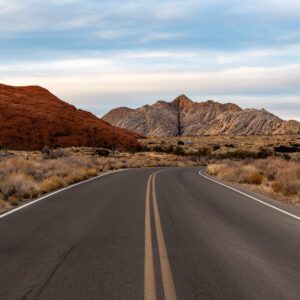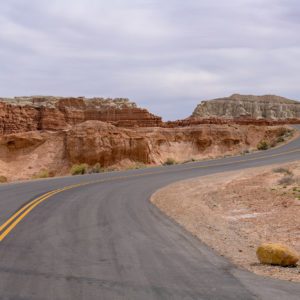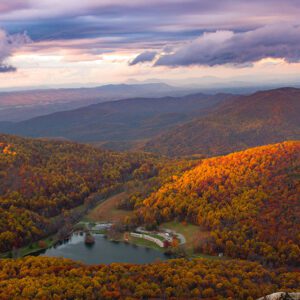Lake Clark National Park and Preserve

Image via Wikipedia
Lake Clark National Park and Preserve is a stunning and remote gem tucked away in southwest Alaska, encompassing over 4 million acres of rugged wilderness. It’s a place where the raw beauty of nature is on full display — from towering volcanoes and turquoise lakes to dense forests and sprawling tundra. The park, established in 1980 as part of the Alaska National Interest Lands Conservation Act, serves as a sanctuary for both wildlife and human history, offering a rare blend of natural wonder and cultural significance.
The Geography and Landscape
Lake Clark National Park and Preserve boasts a dramatic landscape shaped by volcanic activity, glacial forces, and the relentless power of rivers. At its heart lies Lake Clark itself, a 42-mile-long, aquamarine lake that mirrors the snow-capped peaks surrounding it. The park is home to two active volcanoes, Mount Redoubt and Mount Iliamna, whose towering forms dominate the skyline and occasionally remind visitors of their living, breathing presence with steam and minor eruptions.
The diverse terrain includes coastal shores along Cook Inlet, alpine meadows, and expansive boreal forests. This striking variety of environments creates a paradise for outdoor enthusiasts, offering countless opportunities for exploration — whether it’s hiking rugged mountain trails, paddling across serene lakes, or traversing untamed riverways.
The Chigmit Mountains, a subset of the Alaska Range, rise dramatically within the park, blending coastal and interior climates and creating a dynamic ecosystem. These mountains are not only visually stunning but also serve as vital habitats for a range of species, from Dall sheep navigating rocky slopes to brown bears fishing along the riverbanks.
Wildlife of Lake Clark
One of the park’s most captivating aspects is its abundant wildlife. Lake Clark serves as a critical habitat for a wide range of species, making it a prime destination for wildlife enthusiasts and photographers. The region is famous for its large population of brown bears, which congregate along the coastlines to feast on salmon during the summer months. Watching these majestic creatures fish, interact, and roam freely in their natural habitat is an awe-inspiring experience.
In addition to bears, visitors may spot moose grazing in the wetlands, Dall sheep scaling rocky slopes, and wolves prowling through the forests. The park is also a haven for birdwatchers, with over 200 species of birds, including bald eagles, peregrine falcons, and various waterfowl. The coastline along Cook Inlet is home to marine life such as seals, sea otters, and even the occasional beluga whale.
Salmon play a crucial role in the park’s ecosystem. Five species of Pacific salmon — king, sockeye, coho, pink, and chum — migrate through the park’s rivers and lakes, sustaining not only the wildlife but also the cultural traditions of the Dena’ina Athabascan people. The annual salmon run is a spectacle in itself, as the rivers teem with fish fighting their way upstream, drawing predators and offering a front-row seat to one of nature’s most dramatic events.
Outdoor Activities and Adventures
Lake Clark National Park and Preserve is a dream come true for adventure seekers. Despite its remote location — accessible only by boat or small aircraft — the park offers a wealth of activities for those willing to make the journey.
Hiking and Backpacking
- Tanalian Falls Trail: This moderate 4.2-mile round-trip hike starts in Port Alsworth, leading visitors through birch forests and along rocky ridges before revealing the stunning Tanalian Falls. The powerful cascade plunges over a rocky cliff, offering a refreshing mist on warm days and an awe-inspiring view of Lake Clark.
- Kontrashibuna Lake Trail: For a longer trek, this trail extends past Tanalian Falls to the serene shores of Kontrashibuna Lake. Hikers can enjoy panoramic mountain views, wildflower-dotted meadows, and the peaceful sounds of nature.
- Twin Lakes Trails: These trails offer a glimpse into the remote wilderness Richard Proenneke once called home. Backpackers can explore the area around Twin Lakes, visiting Proenneke’s historic cabin and taking in the solitude that defines this part of the park.
Fishing
Anglers will find world-class fishing opportunities here, particularly for salmon and trout. The park’s rivers and lakes teem with fish, making it a prime spot for both fly-fishing and traditional angling. Key fishing spots include:
- Silver Salmon Creek: Famous for its robust silver salmon runs, this creek attracts both fishers and bear watchers alike.
- Kijik River: Known for its sockeye salmon population, this river also offers a chance to catch Arctic char and grayling.
- Lake Clark: The lake itself hosts lake trout, northern pike, and arctic char, providing ample variety for fishing enthusiasts.
Kayaking and Canoeing
Paddling across the crystal-clear waters of Lake Clark or the surrounding rivers offers a tranquil way to explore the park. Adventurers can also take multi-day trips down remote rivers, combining paddling with camping in the wilderness. Popular routes include the Tlikakila River, a designated Wild and Scenic River that winds through glacial valleys and lush forests.
Bear Viewing
Guided bear-viewing tours along the coastlines offer a safe and educational way to observe Lake Clark’s famous brown bears up close. Silver Salmon Creek and Chinitna Bay are prime bear-viewing locations, where visitors can watch bears fishing, playing, and nurturing their cubs.
Cultural and Historical Significance
Lake Clark National Park is not only a natural wonder but also a place of deep cultural importance. For thousands of years, the Dena’ina Athabascan people have called this region home, relying on its rich resources for survival. The park preserves their heritage, with ancient hunting sites, fish camps, and trails serving as a testament to their enduring connection to the land.
Conclusion
Lake Clark National Park and Preserve embodies the true spirit of Alaska’s wilderness. With its stunning landscapes, diverse wildlife, and rich cultural history, it offers an unparalleled experience for those willing to embrace its remote beauty. Whether you’re hiking along mountain ridges, watching bears fish for salmon, or paddling across glassy lakes, Lake Clark promises an adventure that will leave you in awe of nature’s raw and unyielding power.
Nearby Locations:
Lists & Guides Including Lake Clark National Park and Preserve
Maps & Directions:
Get Driving Directions:
Lake Clark National Park and Preserve, Port Alsworth, Alaska 99653
This time, it's OK to leave a trace (Review)
There are no reviews yet. Be the first one to write one.











